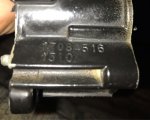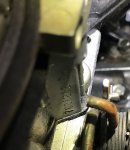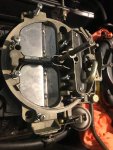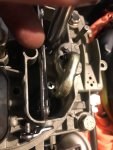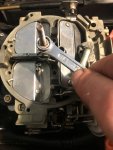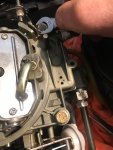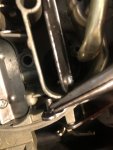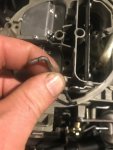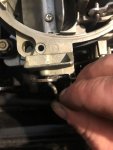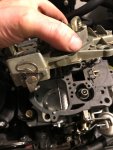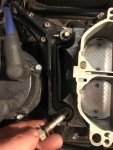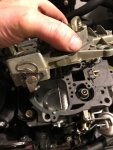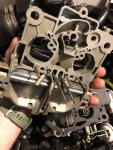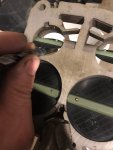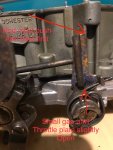Baylinerchuck
Commander
- Joined
- Jul 29, 2016
- Messages
- 2,726
Figured I’d start a thread to list some of the adjustments I’ll try and information I find to properly tune a Q-jet 4 bbl carb for my 4.3L LX in my 1990 2000SL Sport Chaparral.
I bought this remanufactured carburetor from National Carburetor. The original that came on this engine was so polluted with white powdery contamination that I eventually damaged it trying to thoroughly clean it. This aluminum corrosion biproduct also polluted the rest of the fuel system, especially the fuel pump.
The new Q-jet worked ok, but had a few stumbles, one off idle, one a little further, and a major nasty stumble as the secondaries opened. Once past that major stumble and into the secondaries this motor screams to life. The stumble or major hesitation as the secondaries open is extremely annoying. This is the rpm and speed I need to be close to when pulling wake boards or tubes. In this area of the throttle, I’m either too slow, or way too fast.
I’ve tried to tighten the air door spring to help compensate for this and it seemed to be helping, but created a starvation problem, like an intermittent miss at WOT.
There doesn’t seem to be a lot of help trying to adjust these, so I picked up this book.
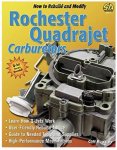
I should have this book tomorrow, and will begin to have a more in-depth understanding of what makes these carbs tick.
I bought this remanufactured carburetor from National Carburetor. The original that came on this engine was so polluted with white powdery contamination that I eventually damaged it trying to thoroughly clean it. This aluminum corrosion biproduct also polluted the rest of the fuel system, especially the fuel pump.
The new Q-jet worked ok, but had a few stumbles, one off idle, one a little further, and a major nasty stumble as the secondaries opened. Once past that major stumble and into the secondaries this motor screams to life. The stumble or major hesitation as the secondaries open is extremely annoying. This is the rpm and speed I need to be close to when pulling wake boards or tubes. In this area of the throttle, I’m either too slow, or way too fast.
I’ve tried to tighten the air door spring to help compensate for this and it seemed to be helping, but created a starvation problem, like an intermittent miss at WOT.
There doesn’t seem to be a lot of help trying to adjust these, so I picked up this book.

I should have this book tomorrow, and will begin to have a more in-depth understanding of what makes these carbs tick.




















